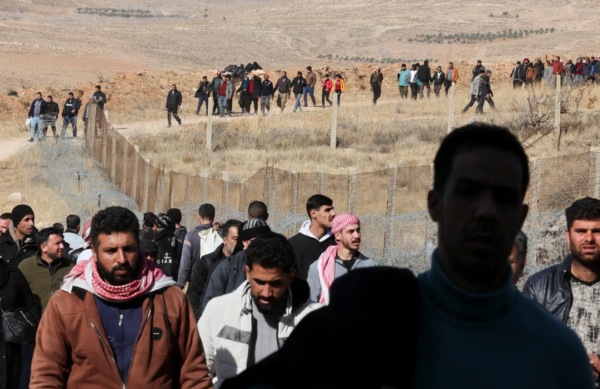People are searching for their loved ones who went missing or disappeared after they were admitted to the Sydnaya prison
After rebel forces overran Damascus on Saturday, toppling the government of President Bashar al-Assad, thousands of prisoners stumbled out of Syria’s nightmarish prisons, suddenly freed after years of torture, trauma, and believing their death could come any day.
At Sednaya Prison, where prisoners were brutally tortured, starved, and killed, people cheered, cried, and shouted as they poured out of the gates.
Rescuers pulled around 700 people from the prison, said Ammar Anselmo, a board member of the White Helmets, Syria’s volunteer first responders. But the prison was believed to hold around 3,000 – at least 2,000 were likely killed and buried, Anselmo said.
“We will face hundreds of mass graves,” he said. “But now, we are trying to observe what’s happened, trying to support the living and to provide emergency services in the cities.”
The group deployed five specialized emergency teams to search for prisoners trapped behind hidden doors and in undiscovered basements, but as of Monday at around 4:45 p.m., no new prisoners were found. Still, videos and photos posted by the group showed trained canines sniffing over the grounds and digging through rubble.
‘The darkest place in Syria’
“Sednaya’s a prison where you wish to die as many times as you can count,” said Omar Alshogre. “They let you suffer very slowly. They want you to be broken, physically and mentally, long before you die.”
Alshogre, now the director of detainee affairs at the Syrian Emergency Task Force, spent 10 months in the prison after he languished for more than two years at Branch 215, another detention center in Damascus known for torture and executions.
The group deployed five specialized emergency teams to search for prisoners trapped behind hidden doors and in undiscovered basements, but as of Monday at around 4:45 p.m., no new prisoners were found. Still, videos and photos posted by the group showed trained canines sniffing over the grounds and digging through rubble.
In Sednaya, a political prison, many of Alshogre’s fellow detainees were highly educated – doctors, lawyers, psychologists, teachers, and engineers, he said. Prisoners were not allowed to speak or scream under torture, and all conversations were whispered. They were forced to carry the bodies of fellow prisoners who were executed. The smell of the burning flesh suffused the cells.
In June 2015, Alshogre’s mother bribed prison officials to stage a mock execution. For two days, prison guards asked him how he wanted to die before they pushed him to the ground, pointed a gun at him, and pulled the trigger.
“Sednaya is the darkest place in Syria, and that’s why tens of thousands of Syrians are now outside of the prison doors trying to see if there’s any corner that has not been yet opened,” Alshogre said.
“It’s an unbelievable moment,” he said. “I dreamed of this moment for so much time.”
Syrians hunt for long-lost family members
Meanwhile, family members of prisoners desperately searched through the freed for their loved ones after years without word of whether they were alive or dead. Video posted by the New York Times showed people paging through books of records in Sednaya, looking for a written trace of their family members. Photos of the missing flooded social media.
Anselmo said he had received thousands of calls from people desperately searching among the escaped. The White Helmets set up a hotline for people searching for information about prisons, he said.
But locating the more than 100,000 people who forcibly disappeared throughout Assad’s regime won’t be easy. Over the past 10 days, White Helmets already collected more than 400 dead bodies of prisoners and discovered more than 100 mass graves, Anselmo said.
Zaki Mehchy fled Syria years ago after police interrogated him for 24 hours. Believing he had a single chance to escape arrest, he fled to Lebanon, and then London, where he now works as a researcher at the London School of Economics and Political Science.
But the fall of the Assad regime and the opening of prisons across the country brought memories flooding back of multiple colleagues who vanished and died in the secretive facilities. Mehchy knows Syrians who were told their imprisoned loved ones, while others walked outside to find their corpse on the doorstep.
“When you enter the prison, you believe that you’re going to die,” he said. “When they’re free, they will feel that they have another life.”
Now, many of Mehchy’s friends are among those searching for family members who disappeared years ago. One friend learned his father, who was arrested in 2015, is alive but has yet to find him.
“Prisoners were freed without any means to reach their families,” he said. “They don’t have mobile phone, they don’t have money to take a cab.”
Others have serious health conditions or are so traumatized that they cannot speak. An Arabic language infographic on treating refeeding syndrome, a serious condition resulting from chronic starvation, was widely on social media in the wake of the prisons’ opening.
For now, Syrians need the space to rebuild, physically and emotionally, he said.
“We need time… also to recover psychologically.”
USA Today
